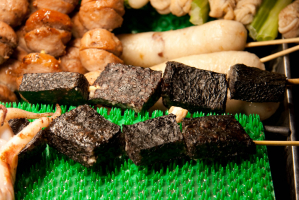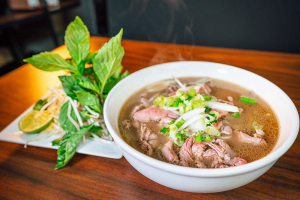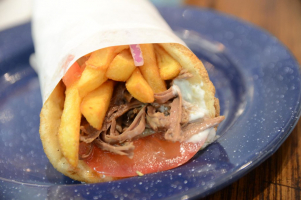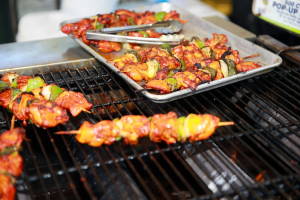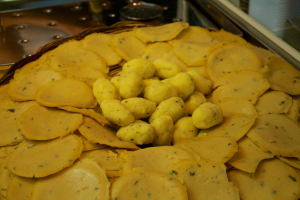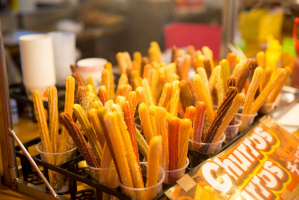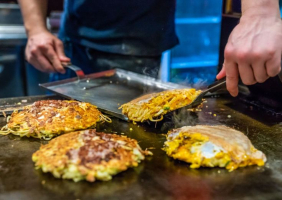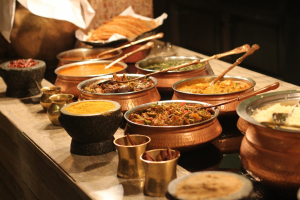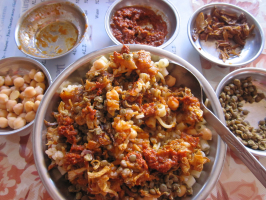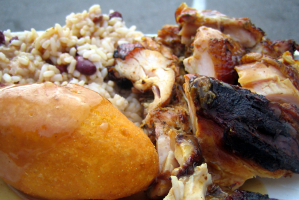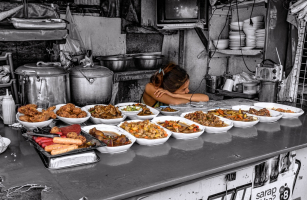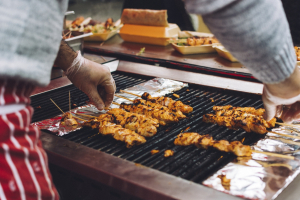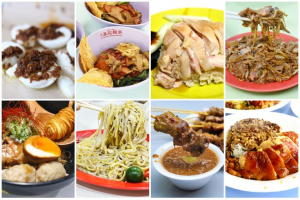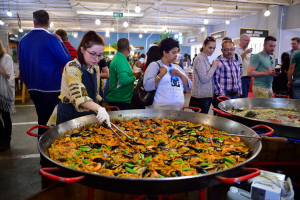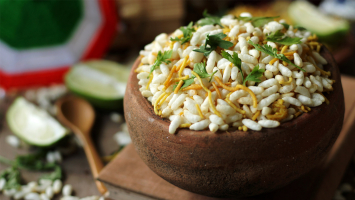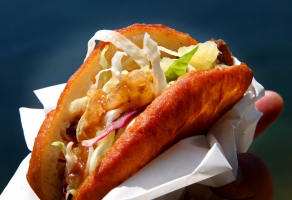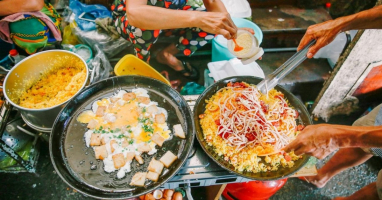Top 10 Most Popular Hawaiian Street Foods
Are you ready to explore the lively street food scene of Hawaii? Our selection of the most popular Hawaiian street food is expertly curated to excite your ... read more...taste buds and introduce you to the diverse range of flavors that this magnificent city has to offer.
-
Loco Moco is a beloved Hawaiian street food that has won the hearts and taste buds of both locals and visitors. It's a true comfort food that features a delicious mix of flavors and textures, making it a popular choice for a hearty and satisfying meal.
The core components of Loco Moco include white rice steamed to perfection, and topped with a juicy hamburger patty seasoned with simple yet flavorful ingredients like salt, pepper, and Worcestershire sauce. On top of the patty, a fried egg is placed, adding a rich and creamy element to the dish. Finally, the Loco Moco is smothered with a savory brown gravy that brings all the ingredients together.
The dish's origins can be traced back to 1949 in downtown Hilo, at the Lincoln Grill Restaurant. A group of local teenagers from a sports club known as the Lincoln Wreckers wanted to create a unique and satisfying alternative to the typical sandwich. They experimented with ingredients they had on hand and came up with the now-famous combination of rice, hamburger patty, fried egg, and gravy. The dish became an instant hit and quickly gained popularity throughout Hawaii.
The beauty of Loco Moco lies in its versatility. While the traditional version remains the most popular, variations have emerged over the years. Some restaurants add extras like spam, Portuguese sausage, or even seafood to create unique twists on the classic dish. This allows diners to tailor their Loco Moco experience to their preferences while still enjoying the essence of this beloved Hawaiian comfort food.
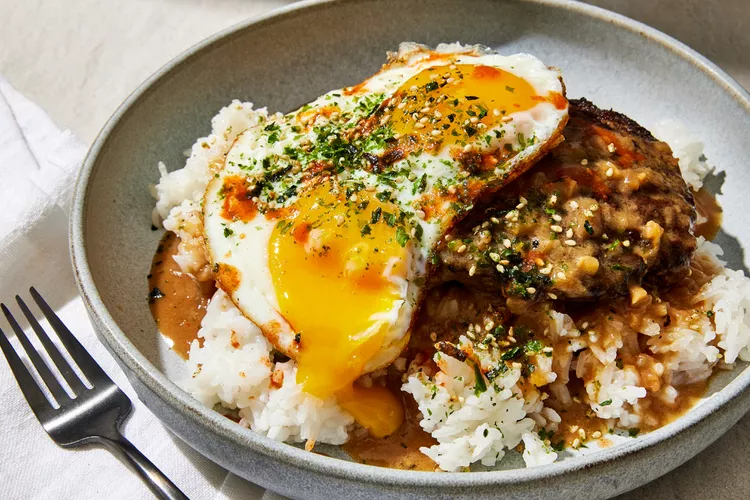
foodandwine.com/ 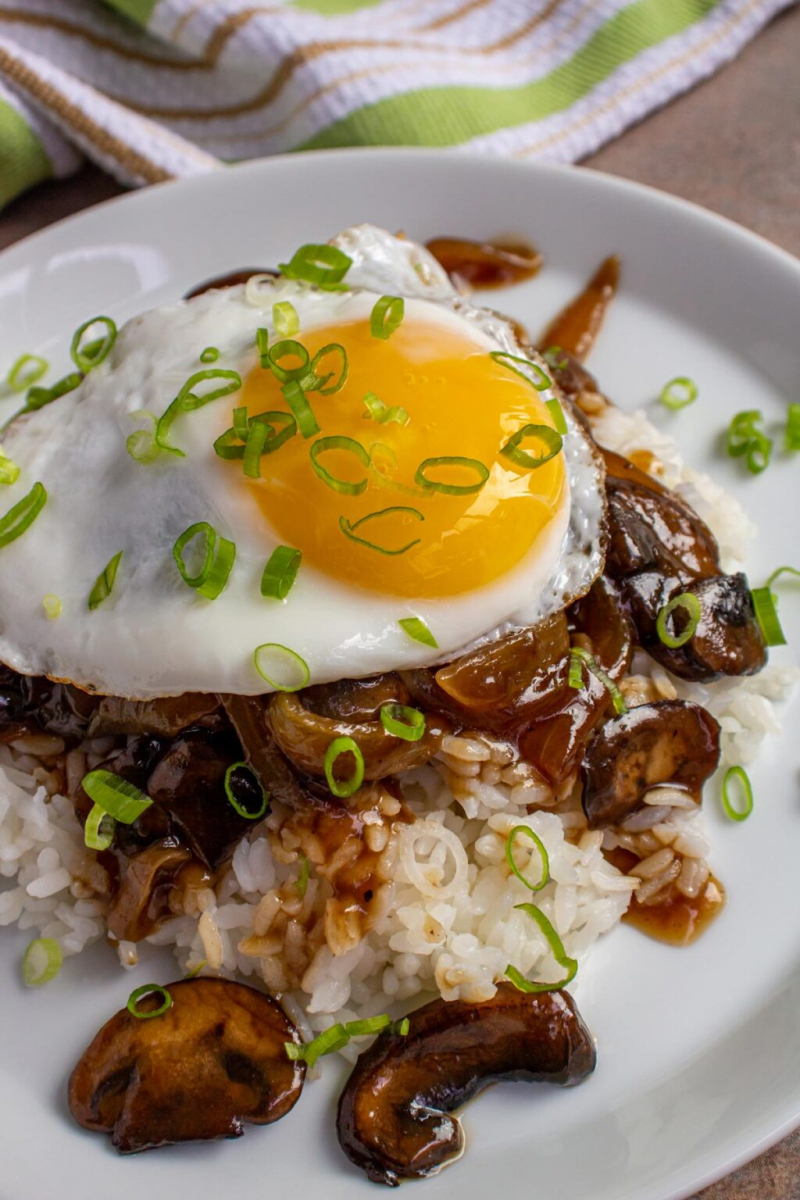
mission-food.com -
Hawaiian Malasadas, inspired by the Portuguese donuts known as malassadas, have become a beloved specialty in the islands. These delectable treats have gained popularity for their unique preparation and delightful flavors.
Malasadas are made by creating a yeast-based dough that is allowed to rise until it becomes light and airy. The dough is then carefully portioned into rounds or squares and deep-fried until golden brown and crispy. Once cooked, the malasadas are rolled in sugar, ensuring a sweet and crunchy exterior.
One of the highlights of Malasadas is their ability to be filled with a variety of delightful flavors. Traditional fillings include velvety custard, rich chocolate, and tropical fruit like guava, which adds a burst of sweetness. The fillings are typically injected into the malasada using a pastry bag or pipette, creating a flavorful surprise inside each donut.
In Hawaii, Malasadas are is not only enjoyed as a standalone treat but also as a centerpiece of celebrations and festivals. They are often found at local bakeries, food trucks, and specialty shops, enticing both locals and tourists with their irresistible aroma and heavenly taste.
If you're lucky enough to sink your teeth into a freshly made Malasada, you'll be met with a satisfying contrast of textures. The crispy sugar-coated exterior gives way to a pillowy soft interior, creating a delightful sensation in every bite. The flavor combinations of the fillings add an extra layer of decadence, making each malasada a truly indulgent experience.
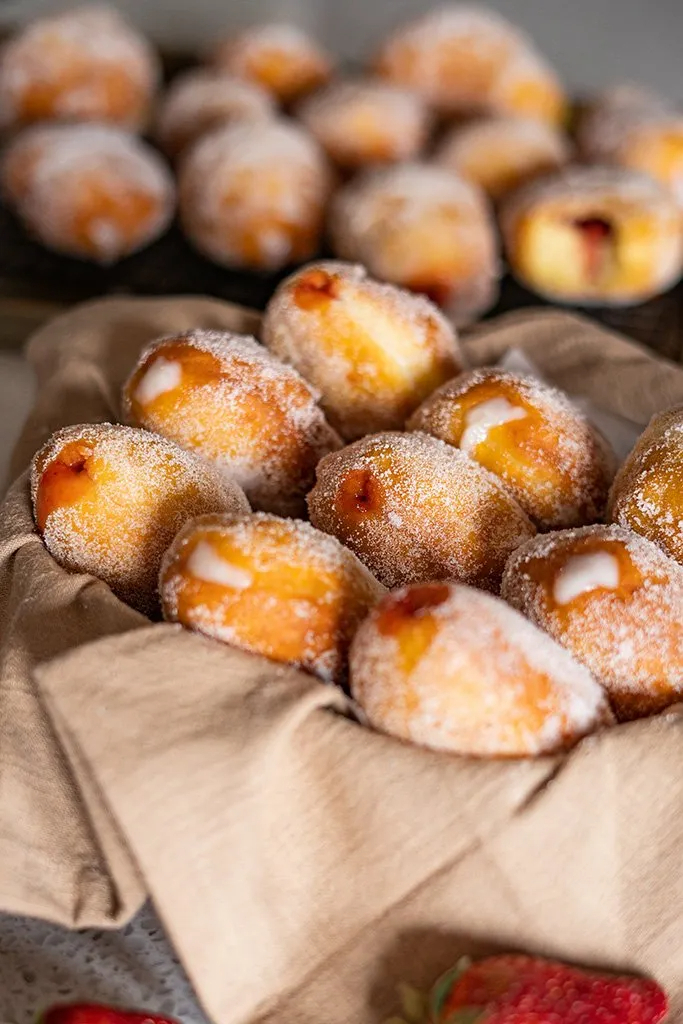
onohawaiianrecipes.com 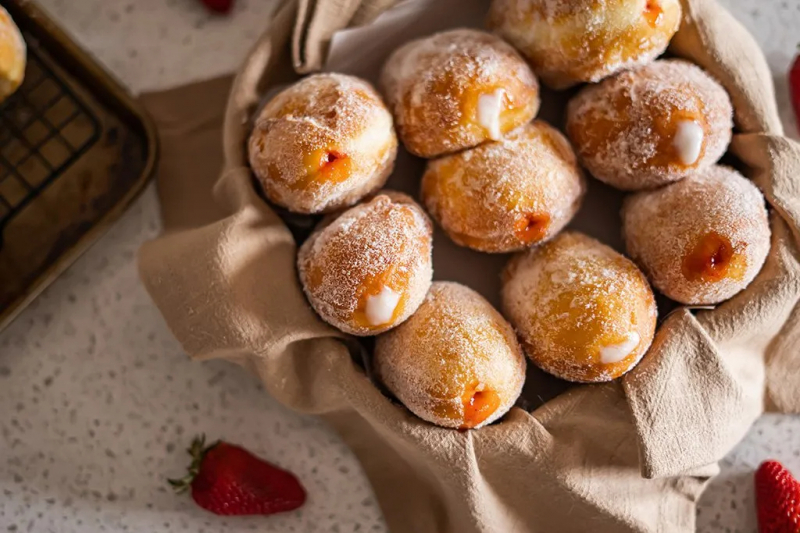
onohawaiianrecipes.com -
Acai Bowls have undoubtedly become a popular food trend worldwide, and they have indeed made their way to Hawaii. These refreshing and nutritious bowls have become a staple in the Hawaiian cuisine, offering locals and visitors a taste of tropical goodness.
The star ingredient in Acai Bowls is the frozen acai berry. Acai berries are small, purple fruits native to the Amazon rainforests in Brazil. They are known for their rich antioxidant content, healthy fats, and fiber, making them a highly nutritious addition to any diet. The frozen acai pulp is blended to create a thick and smooth base for the bowl.
To assemble an Acai Bowl, the blended acai is poured into a bowl and topped with an assortment of fresh fruits. Popular choices include sliced bananas, berries, mangoes, and pineapple, which add a burst of color, flavor, and natural sweetness to the bowl. Additionally, a generous sprinkle of granola provides a crunchy texture and an extra dose of fiber and energy. Some variations of Acai Bowls include toppings such as coconut flakes, chia seeds, or even a drizzle of honey for added sweetness.
Acai Bowls are not only visually appealing but also offer a host of health benefits. The antioxidant properties of acai berries can help protect the body against oxidative stress and promote overall well-being. Including fresh fruits and granola adds vitamins, minerals, and dietary fiber, creating a balanced and satisfying meal option.
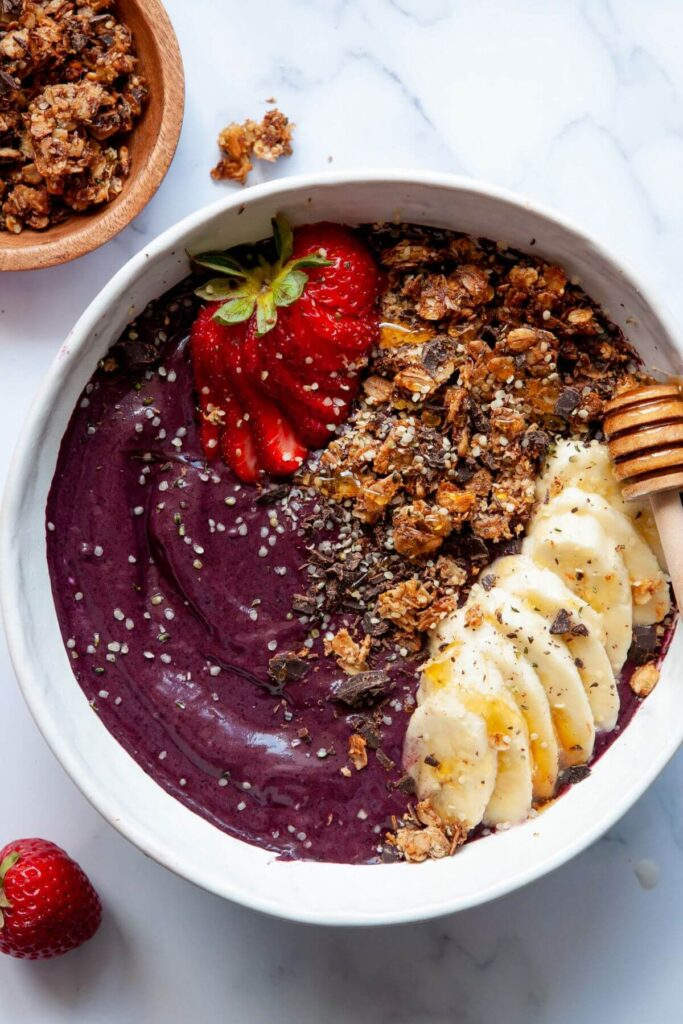
healthfulblondie.com 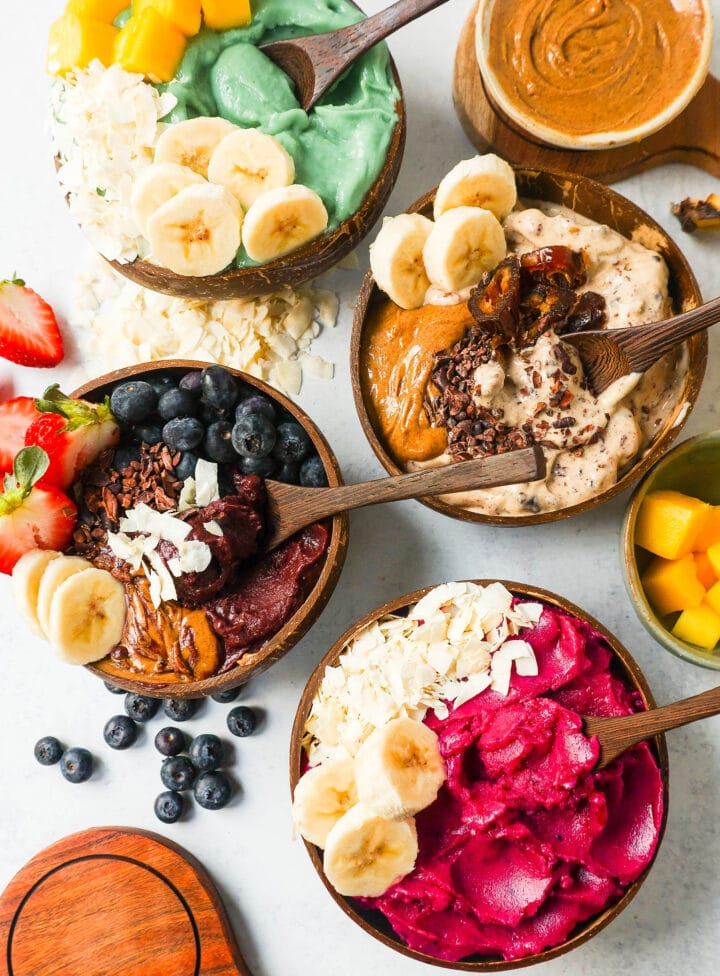
modernhoney.com -
Poi Mochi is a delightful fusion of Japanese and Hawaiian cuisines, combining the traditional Japanese mochi with the unique flavors of Hawaii. The star ingredient in Poi Mochi is poi, a Hawaiian staple made from taro root.
Taro root, known for its starchy and slightly sweet taste, is boiled and pounded into a smooth and sticky paste to create poi. This paste is then incorporated into the mochi dough, along with other ingredients such as mochiko flour, water, and sugar. The addition of poi not only enhances the flavor of the mochi but also gives it a vibrant purple hue.
The process of making Poi Mochi involves mixing the ingredients to form a thick and sticky dough. This dough is then portioned out and shaped into small balls, which are traditionally rolled in coconut flakes or sesame seeds for added texture and flavor. The Poi Mochi balls are steamed until they become soft and chewy, with a slightly gooey center.
Poi Mochi is enjoyed as a snack or dessert in Hawaii, particularly during special occasions and celebrations. It is often served at Hawaiian luaus, where guests can indulge in its unique taste and texture. The combination of the traditional Japanese mochi with the Hawaiian poi creates a remarkable culinary experience that showcases the diverse cultural influences of the island.
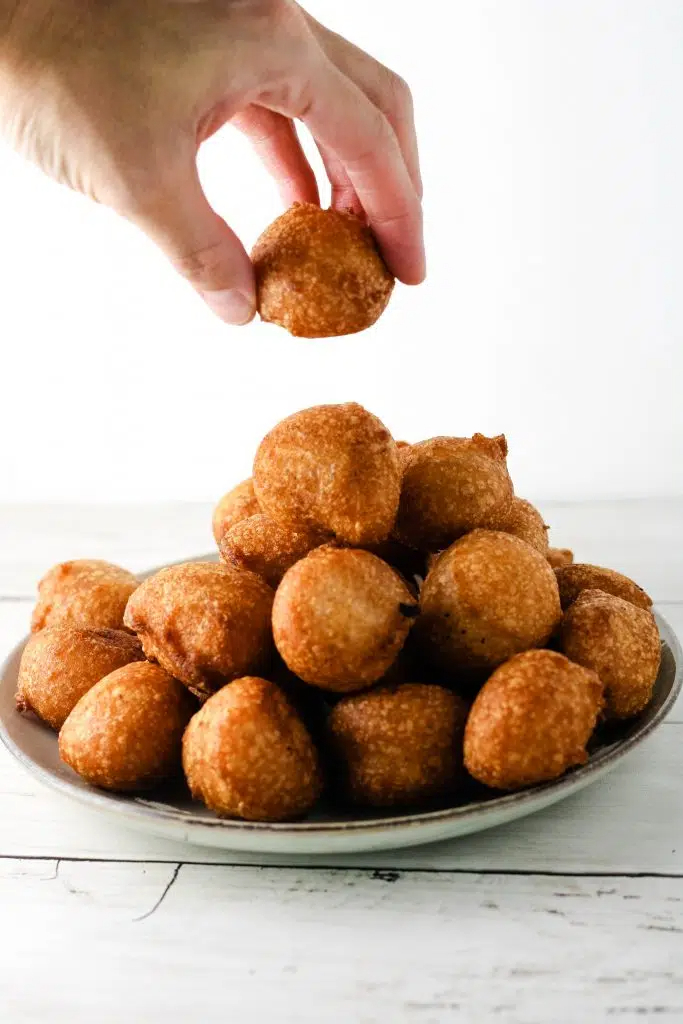
keepingitrelle.com 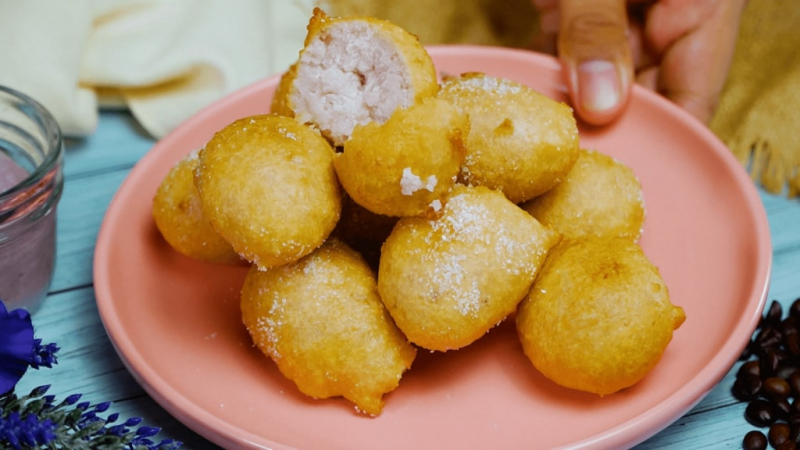
recipes.net -
Andagi, often described as a Hawaiian donut, is a beloved treat that delights locals and visitors alike. These golden balls of dough are deep-fried to perfection, resulting in a crispy exterior and a soft, fluffy interior. It's no wonder that Andagi has become synonymous with indulgence in Hawaii's culinary scene.
The origins of Andagi can be traced back to Okinawa, a region of Japan with a rich culinary heritage. Okinawan immigrants brought their traditional recipes and techniques to Hawaii, including the beloved Andagi. Over time, the treat adapted to local tastes and ingredients, becoming a staple of Hawaiian cuisine.
The process of making Andagi is relatively simple. A basic dough is prepared using ingredients such as flour, sugar, eggs, and baking powder. The dough is then shaped into small balls and dropped into hot oil, where it is deep-fried until it turns golden brown and crispy. The result is a delectable treat, reminiscent of a donut, with a unique texture and flavor.
Andagi can be enjoyed in its plain form, dusted with powdered sugar for a touch of sweetness. However, variations of Andagi can be found, featuring different toppings or fillings. Some popular variations include chocolate-covered andagi, coconut-flavored andagi, and even savory versions with ingredients like bacon or cheese.
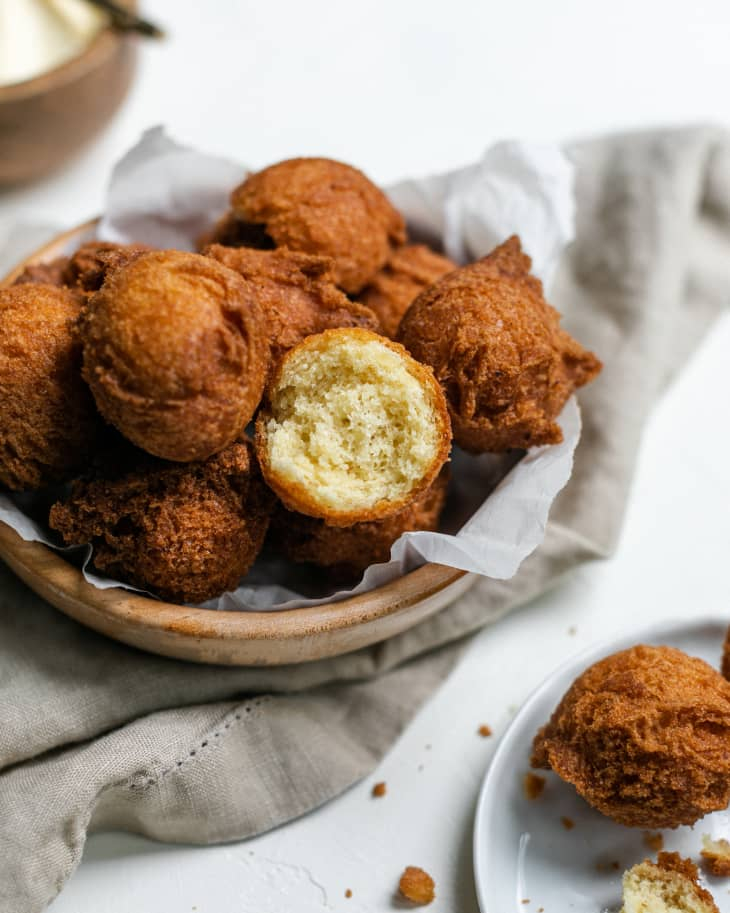
thekitchn.com 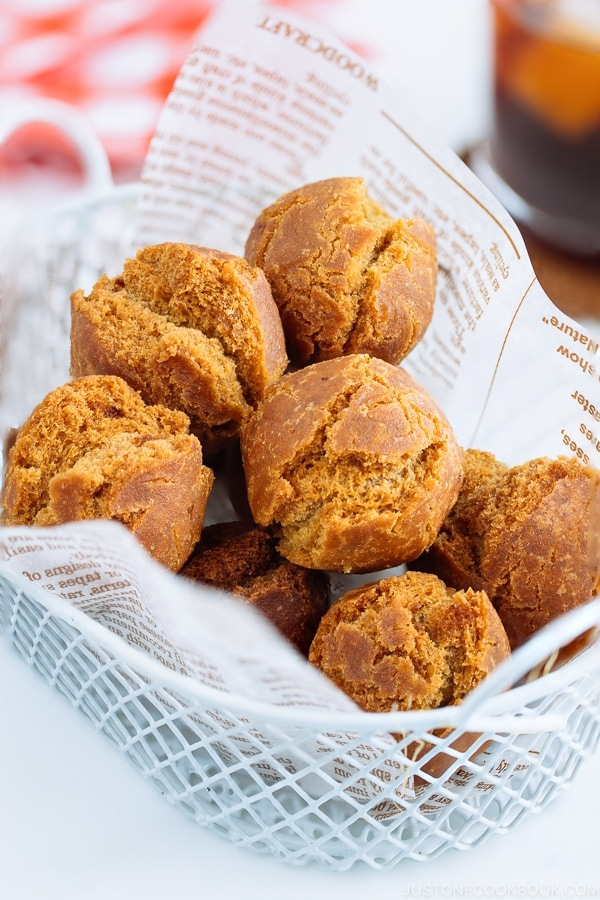
justonecookbook.com -
No visit to Hawaii is complete without sipping on a Mai Tai, the quintessential tropical cocktail that has become synonymous with the islands. This iconic drink combines the flavors of rum, orange curaçao, lime juice, and orgeat syrup to create a refreshing and fruity concoction that beautifully captures the spirit of Hawaii.
The origins of the Mai Tai can be traced back to the mid-20th century, with conflicting claims over its true creator. One popular story attributes the invention of the Mai Tai to Victor Bergeron, better known as Trader Vic. According to this tale, Trader Vic created the drink in 1944 at his bar in Oakland, California. He mixed aged Jamaican rum, lime juice, orange curaçao, and orgeat syrup, calling it the "Mai Tai Swizzle" after a friend exclaimed joy upon sipping the cocktail.
Traditionally, a classic Mai Tai is made by combining aged rum, typically from Jamaica or Martinique, with a high-quality orange curaçao, freshly squeezed lime juice, and orgeat syrup, which is made from almonds. The ingredients are shaken with ice, strained into a glass filled with crushed ice, and garnished with a sprig of mint and a lime wheel. The result is a vibrant and refreshing cocktail that perfectly balances the sweetness of the rum and curaçao with the tartness of the lime juice.
Today, the Mai Tai is a beloved symbol of Hawaiian hospitality and a must-try for visitors to the islands. Many bars and restaurants across Hawaii serve their versions of the Mai Tai, often adding local twists by incorporating fresh fruits or using locally produced rum. Whether enjoyed poolside at a resort, at a tiki-themed bar or while watching a famous Hawaiian sunset, sipping on a Mai Tai is a delightful way to immerse oneself in the tropical paradise of Hawaii.
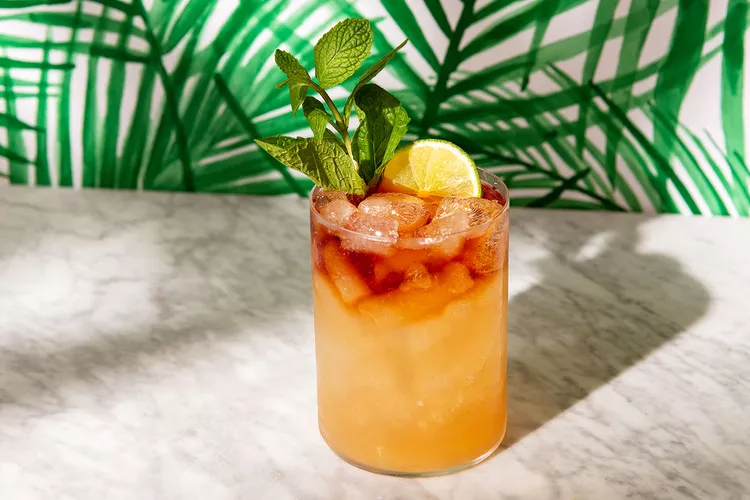
foodandwine.com 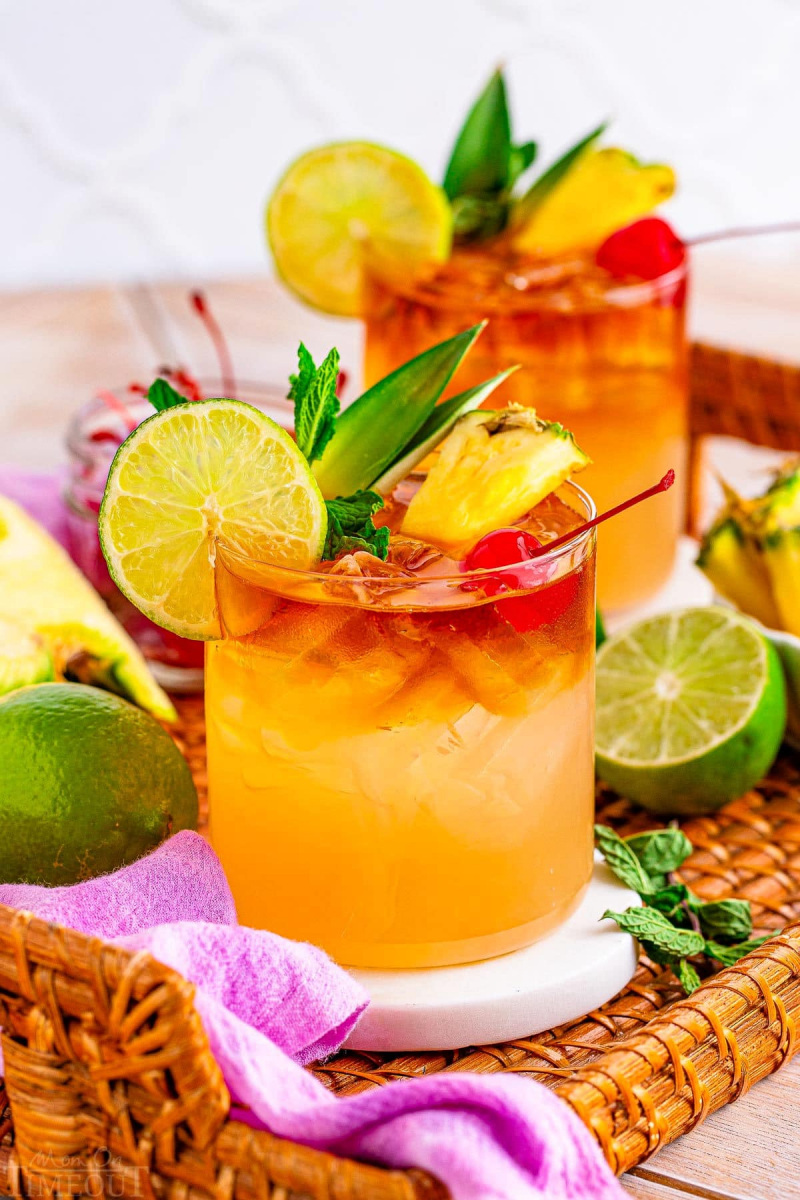
momontimeout.com -
Shave Ice, a refreshing frozen dessert, is the perfect treat to cool down on a hot Hawaiian day. This beloved dessert consists of finely shaved ice, topped with an array of delicious flavored syrups, providing a burst of fruity and sweet flavors. The variety of options and add-ons available make shave ice a customizable and delightful dessert experience.
The process of creating Shave Ice begins with a block of ice, which is meticulously shaved into delicate, snow-like flakes using a specialized machine. This finely shaved ice serves as the foundation for the dessert, lending it a light and fluffy texture that melts in your mouth.
The true beauty of Shave Ice lies in the vast selection of syrups and toppings available. Hawaiian syrup flavors such as coconut, pineapple, lilikoi (passion fruit), and guava are popular choices. These syrups are poured generously over the shaved ice, infusing the dessert with a burst of tropical flavors that evoke the essence of Hawaii.
To enhance the experience further, add-ons like condensed milk, azuki beans (sweetened red beans), ice cream, or even fresh fruit can be added to the Shave Ice. The addition of condensed milk provides a rich and creamy element, while the azuki beans add a delightful sweetness and hint of texture. These additional toppings make each bite a delightful and indulgent experience.
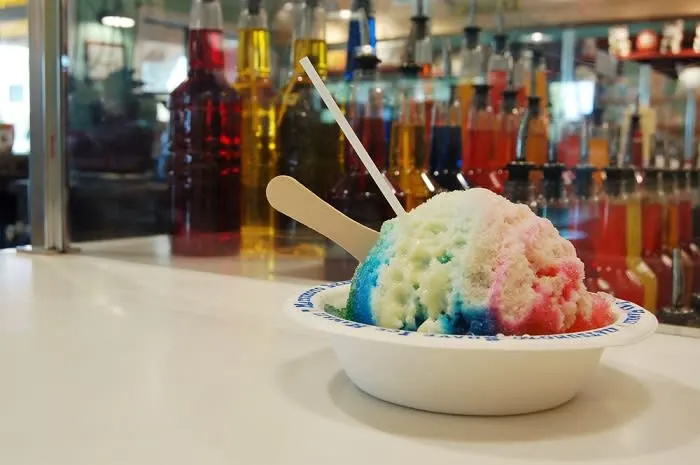
tracyallenhawaii.com 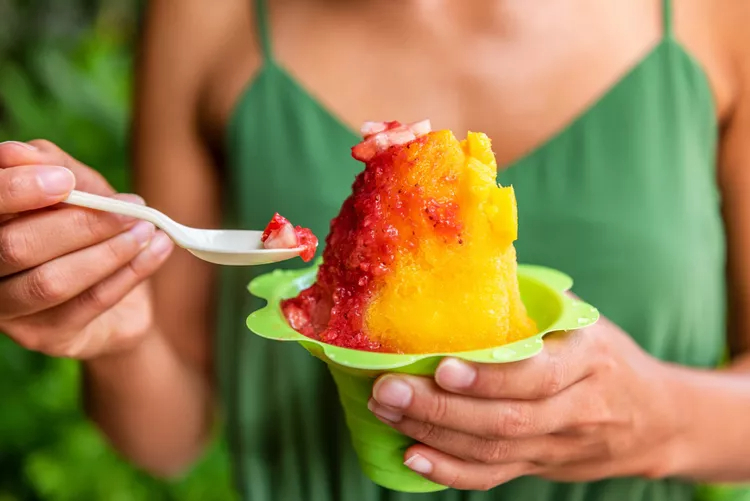
allrecipes.com -
Spam Musubi, a beloved Hawaiian snack, is a culinary innovation that perfectly blends the island's fascination with Spam and the art of sushi-making. This unique treat has become a staple in Hawaiian cuisine, offering both convenience and irresistible flavors for those on the go.
The preparation of Spam Musubi involves a few simple steps that come together to create a delightful snack. It begins with a slice of Spam, a canned meat that gained popularity in Hawaii after World War II due to its affordability and versatility. The Spam is then grilled or pan-fried until it develops a crispy and caramelized exterior, enhancing its flavor.
Next, a rectangular block of sushi rice is formed, typically seasoned with a light touch of rice vinegar for added tanginess. The slice of Spam is carefully placed on top of the rice block, creating a savory layer that complements the rice perfectly. To complete the Spam Musubi, a strip of nori, a type of seaweed, is wrapped around the rice and Spam, holding everything together and adding a delightful oceanic touch to the snack.
The result is a compact and portable treat that showcases the harmonious combination of flavors and textures. The salty and slightly savory Spam pairs exquisitely with the tender and slightly tangy rice. The nori wrapper adds a slight briny taste and a satisfying crunch, completing the overall experience.
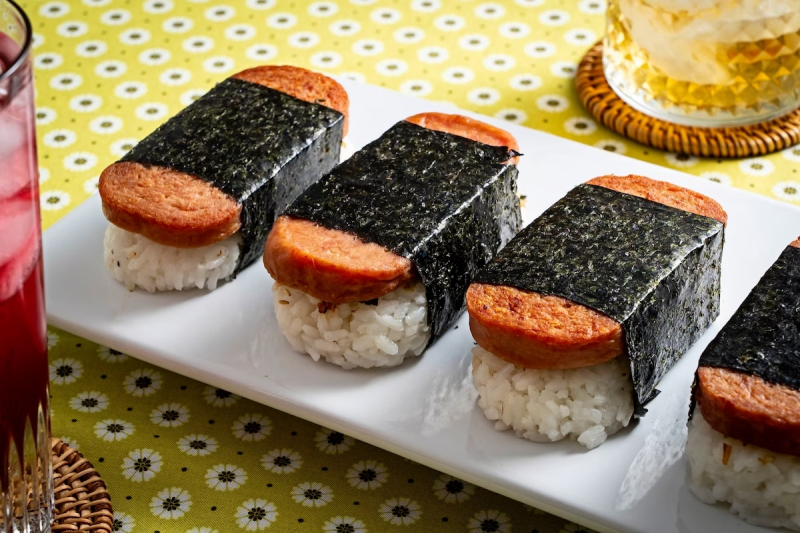
washingtonpost.com 
smellylunchbox.com -
Poke, a term derived from the Hawaiian language, means "to slice or cut." It is a beloved island dish that has gained immense popularity not only in Hawaii but also around the world. The poke bowl has become a culinary sensation, captivating food enthusiasts with its fresh flavors, vibrant colors, and artistic presentation.
A typical Poke Bowl begins with cubes of raw fish that are marinated in a flavorful sauce. While tuna and salmon are the most common choices, other seafood options like octopus, shrimp, or even tofu can also be used. The fish is cut into bite-sized pieces, allowing it to absorb the marinade and infuse it with a burst of flavors.
Traditional poke marinades often include soy sauce, sesame oil, lime juice, and other seasonings like ginger and garlic. These marinades impart a delightful tanginess and umami richness to the fish, elevating its natural flavors. In addition to the marinated fish, a Poke Bowl is typically served over a bed of rice or a bed of fresh greens, providing a satisfying base for the dish.
The Poke Bowl's versatility and ability to adapt to different tastes and dietary preferences have contributed to its widespread popularity. It can be enjoyed as a light lunch, a refreshing dinner, or even as a party appetizer. Many restaurants and food establishments now offer their unique versions of poke bowls, allowing customers to customize their creations to suit their preferences.
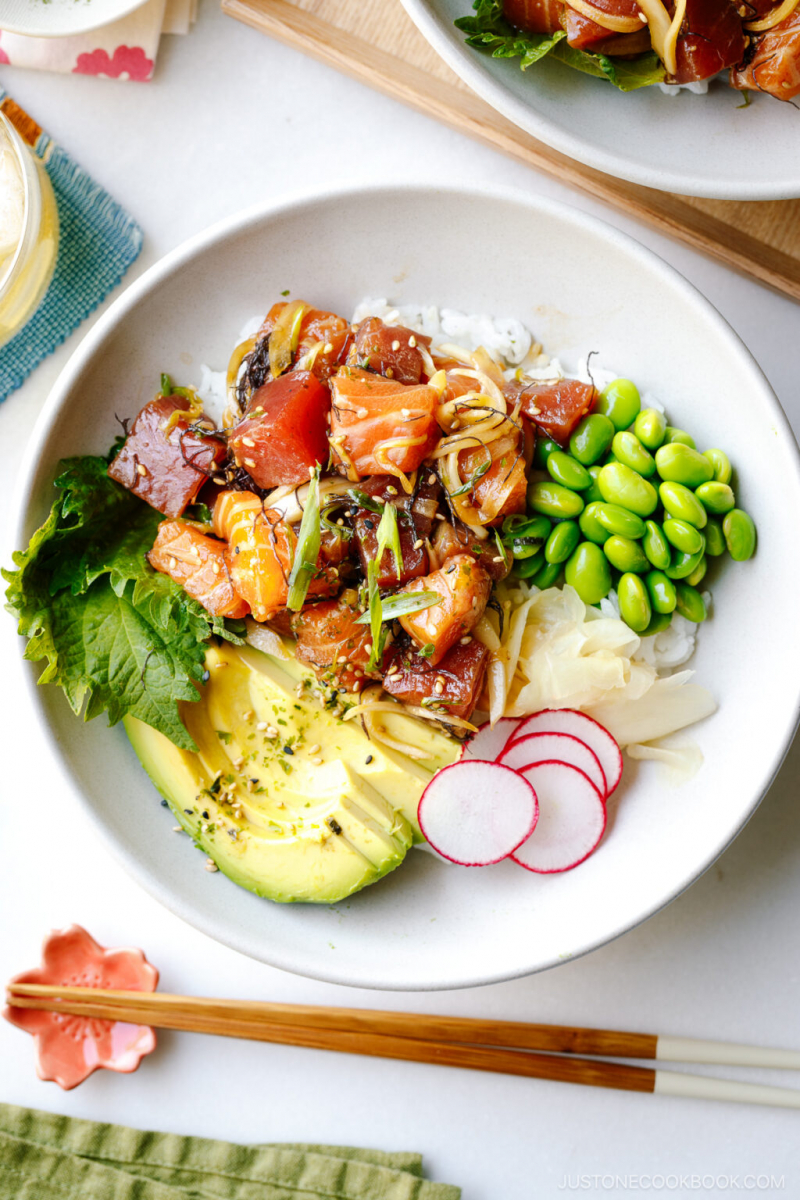
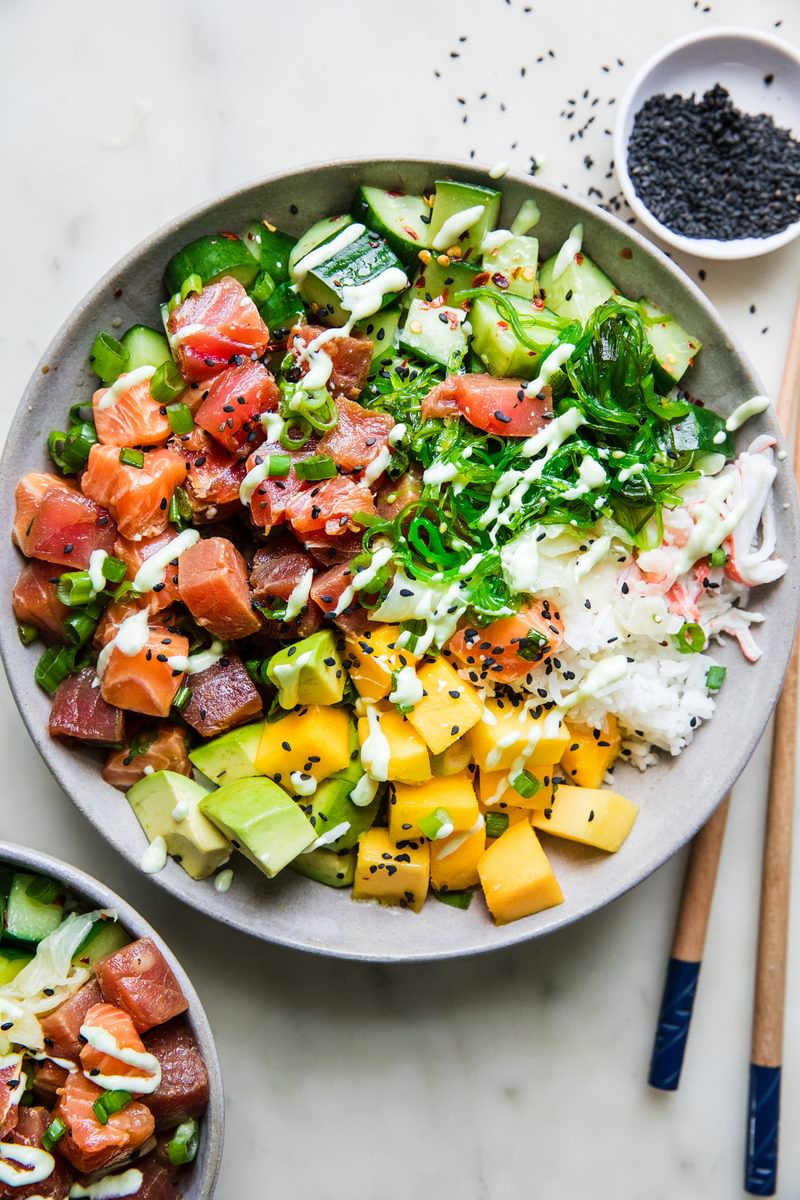
-
Manapua, a beloved Hawaiian street food, bears a striking resemblance to Chinese baozi, with its fluffy, steamed bun exterior and delectable fillings. This portable treat is a staple in Hawaiian bakeries and is enjoyed by locals and tourists alike.
The origins of Manapua can be traced back to the late 19th century when Chinese immigrants came to Hawaii to work on sugar and pineapple plantations. These immigrants brought with them their culinary traditions, including the art of making baozi. Over time, Manapua evolved with its distinct flavors and fillings, reflecting the fusion of Chinese and Hawaiian cuisines.
The process of making Manapua involves preparing a yeast-based dough that is allowed to rise until it becomes soft and pillowy. The dough is then shaped into individual steamed buns and filled with the desired ingredients. The buns are placed in a steamer, where they are cooked until they become tender and fluffy.
The result is a delightful snack that boasts a perfect balance of textures and flavors. The soft and chewy exterior of the bun contrasts beautifully with the savory filling inside. The char siu filling, for example, offers a combination of sweet and smoky flavors that pairs wonderfully with the fluffy bun.
Manapua is enjoyed as a convenient and delicious grab-and-go snack in Hawaii. It can be found in local bakeries, food stalls, and even convenience stores. Whether you're craving a savory or sweet treat, manapua offers a wide range of options to satisfy your taste buds.
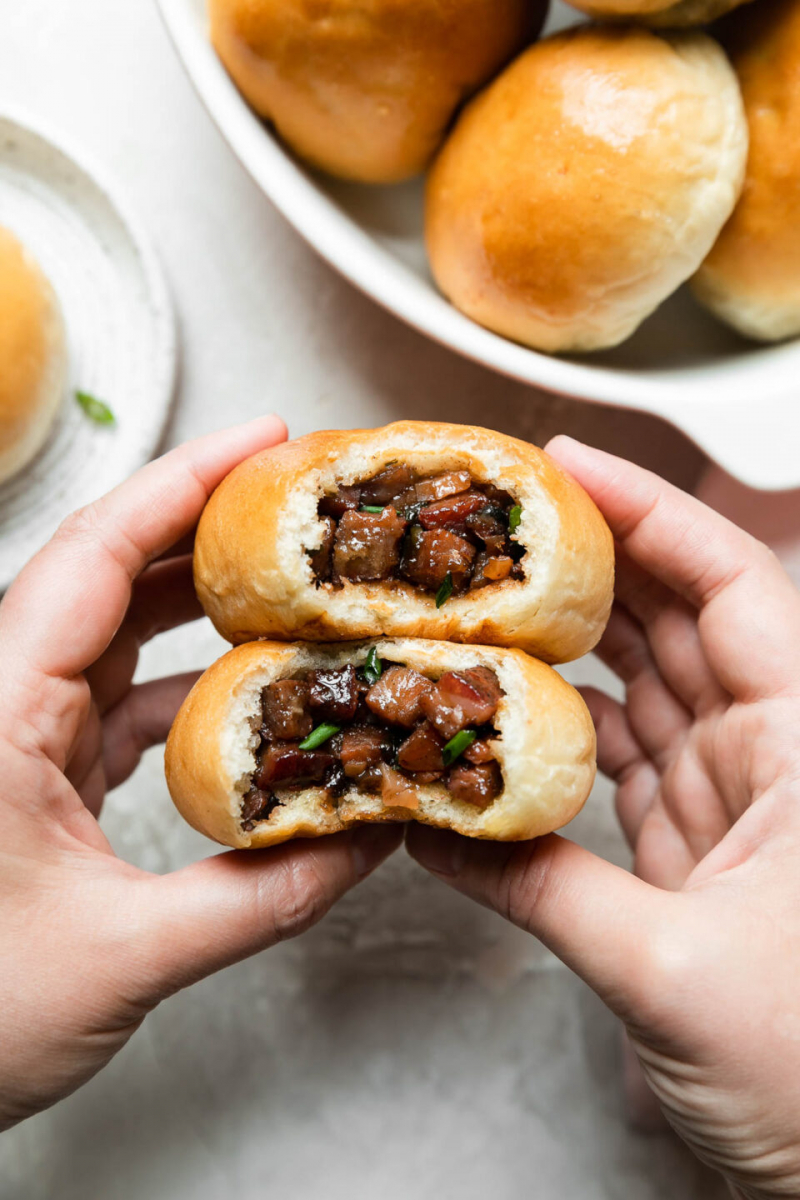
playswellwithbutter.com 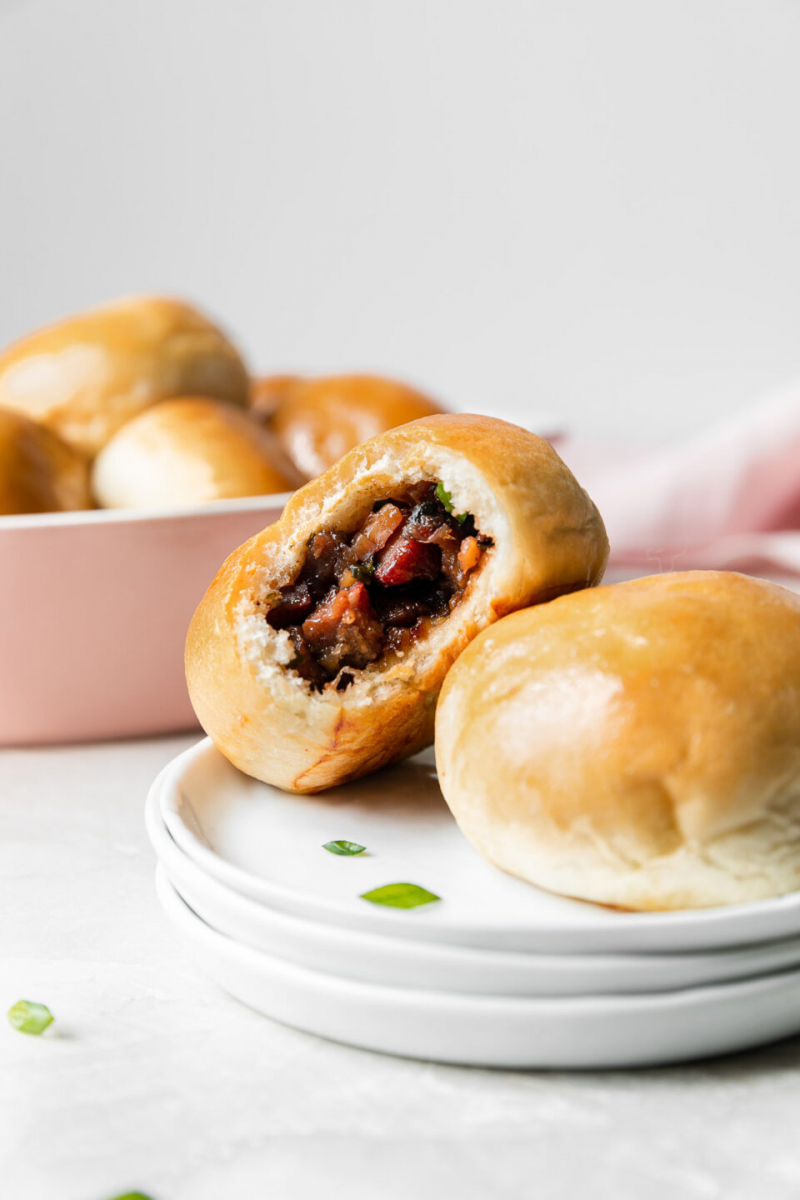
playswellwithbutter.com












